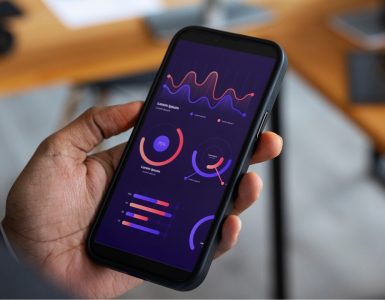In a world where digital landscapes are continuously morphing and evolving, Augmented Reality (AR) stands out as a technological marvel that bridges the gap between virtual and real worlds. Unlike its fully immersive counterpart, Virtual Reality (VR), AR enhances rather than replaces the real world by overlaying digital components such as images, videos, and 3D models onto our everyday environments. This unique capability has opened new frontiers in web development, offering ways to enhance user engagement and interactivity across various sectors including retail, education, and entertainment.
As we dive into this transformative technology, the importance of integrating AR with web applications becomes increasingly apparent. Traditional web applications operate within the confines of a screen, but with AR, these experiences can leap off the screen and interact with the environment around the user, providing a more dynamic and engaging user experience.
The integration of AR into web development is not just about enhancing aesthetic appeal or entertainment value; it’s about creating practical, interactive experiences that can aid in education, training, retail, and more. For instance, an e-commerce site can use AR to allow customers to visualize how a piece of furniture would look in their own living room before making a purchase decision.
This blog aims to explore the intersection of AR and full stack web development. We will guide you through the necessary steps to create an immersive AR web application, discussing everything from setting up your development environment to deploying your final product.
What is Augmented Reality in Web Development?
Augmented Reality involves overlaying virtual content (images, videos, 3D models) on real-world environments, providing a composite view through devices like smartphones, tablets, or AR glasses. The core components of AR include a camera to capture real-world inputs, a processing system to synchronize virtual objects with physical space, and a display to show the augmented scenes to the user.
For web developers, implementing AR on websites has been made accessible through frameworks such as WebXR, A-Frame, and libraries like AR.js, which leverage JavaScript and HTML to create AR experiences directly in web browsers without native app installations.
Current trends show an increasing adoption of AR in sectors like retail, for try-before-you-buy experiences, education for interactive learning, and in marketing for engaging advertising campaigns. According to a report by Statista, the global AR market is expected to grow significantly, reaching about $198 billion U.S. dollars by 2025.
Setting Up Your Development Environment
To begin developing AR web applications, you need to set up a robust development environment. This section guides you through installing the necessary tools and frameworks.
Tools and Frameworks Needed:
Node.js: An asynchronous event-driven JavaScript runtime, Node is designed to build scalable network applications.
AR.js: A lightweight library for AR that works with A-Frame or Three.js.
A-Frame: A web framework for building virtual reality (VR) and AR experiences.
Installation Guide:
First, install Node.js from nodejs.org. Then, set up a new project directory and install A-Frame using npm:
bash
mkdir my-ar-project
cd my-ar-project
npm init -y
npm install aframe
Initial Project Structure:
Create the following files in your project directory:
index.html – for the AR scene
app.js – for backend logic (if needed)
Building a Simple AR Web Application
Let’s create a basic AR application where users can view a 3D model of a car on a marker.
Frontend Development:
In your index.html, embed the A-Frame and AR.js libraries and set up the AR scene:
html
Copy code
<!DOCTYPE html>
<html>
<head>
<script src=”https://aframe.io/releases/1.2.0/aframe.min.js”></script>
<script src=”https://jeromeetienne.github.io/AR.js/aframe/build/aframe-ar.js”></script>
</head>
<body style=”margin : 0px; overflow: hidden;”>
<a-scene embedded arjs=’sourceType: webcam;’>
<a-marker preset=”hiro”>
<a-box position=’0 0.5 0′ rotation=”0 45 0″ material=’color: blue;’></a-box>
</a-marker>
<a-entity camera></a-entity>
</a-scene>
</body>
</html>
Backend Development:
Set up a simple Node.js server:
javascript
const express = require(‘express’);
const app = express();
const PORT = 3000;
app.use(express.static(‘public’));
app.listen(PORT, () => {
console.log(`Server running on http://localhost:${PORT}`);
});
Place your index.html in a new public folder so that Express can serve it as a static file.
Integrating Advanced AR Features
To enhance your AR application, consider adding spatial tracking and interactive elements:
Spatial Tracking:
Enable real-world positioning in A-Frame by using GPS-based components to place AR content at specific geographic locations.
Interactive Elements:
Add interactivity to the AR objects:
javascript
AFRAME.registerComponent(‘markerhandler’, {
init: function() {
this.el.addEventListener(‘markerFound’, () => {
alert(‘Marker found!’);
});
}
});
// In your HTML
<a-marker preset=”hiro” markerhandler></a-marker>
Testing and Optimizing AR Web Applications
Testing Tools and Techniques:
- Use the AR.js Debugger to check performance issues.
- Test across multiple devices to ensure compatibility.
Performance Optimization:
- Optimize asset sizes (reduce model complexity).
- Use efficient encoding for textures and assets.
User Experience (UX) Considerations:
- Ensure that instructions for using the AR features are clear.
- Design for various interaction modes (e.g., touch, voice).
Deploying Your AR Web Application
Deployment Platforms:
You can deploy your AR web application on platforms like Vercel or Netlify by pushing your code to a Git repository and linking it to these services.
CI/CD:
Set up a GitHub Actions workflow to automate your deployments:
yaml
name: Deploy Web Application
on: [push]
jobs:
build:
runs-on: ubuntu-latest
steps:
– uses: actions/checkout@v2
– name: Deploy to Netlify
uses: netlify/actions/cli@master
env:
NETLIFY_AUTH_TOKEN: ${{ secrets.NETLIFY_AUTH_TOKEN }}
NETLIFY_SITE_ID: ${{ secrets.NETLIFY_SITE_ID }}
run: netlify deploy –prod –dir=public
Conclusion
AR has the potential to transform mundane web interfaces into vibrant, interactive experiences that engage users in unprecedented ways. The ability to overlay digital information onto the real world not only enriches user experience but also paves the way for innovative applications in advertising, education, and beyond.
However, the road to mastering AR in web development is continuous and ever-evolving. As technology advances, so too will the tools and frameworks available, allowing for more sophisticated and seamless AR experiences. The current landscape of AR technology is just the beginning. With ongoing developments in AR frameworks and increasing browser support, the potential for creating more complex, interactive, and engaging web applications is vast.






Add comment